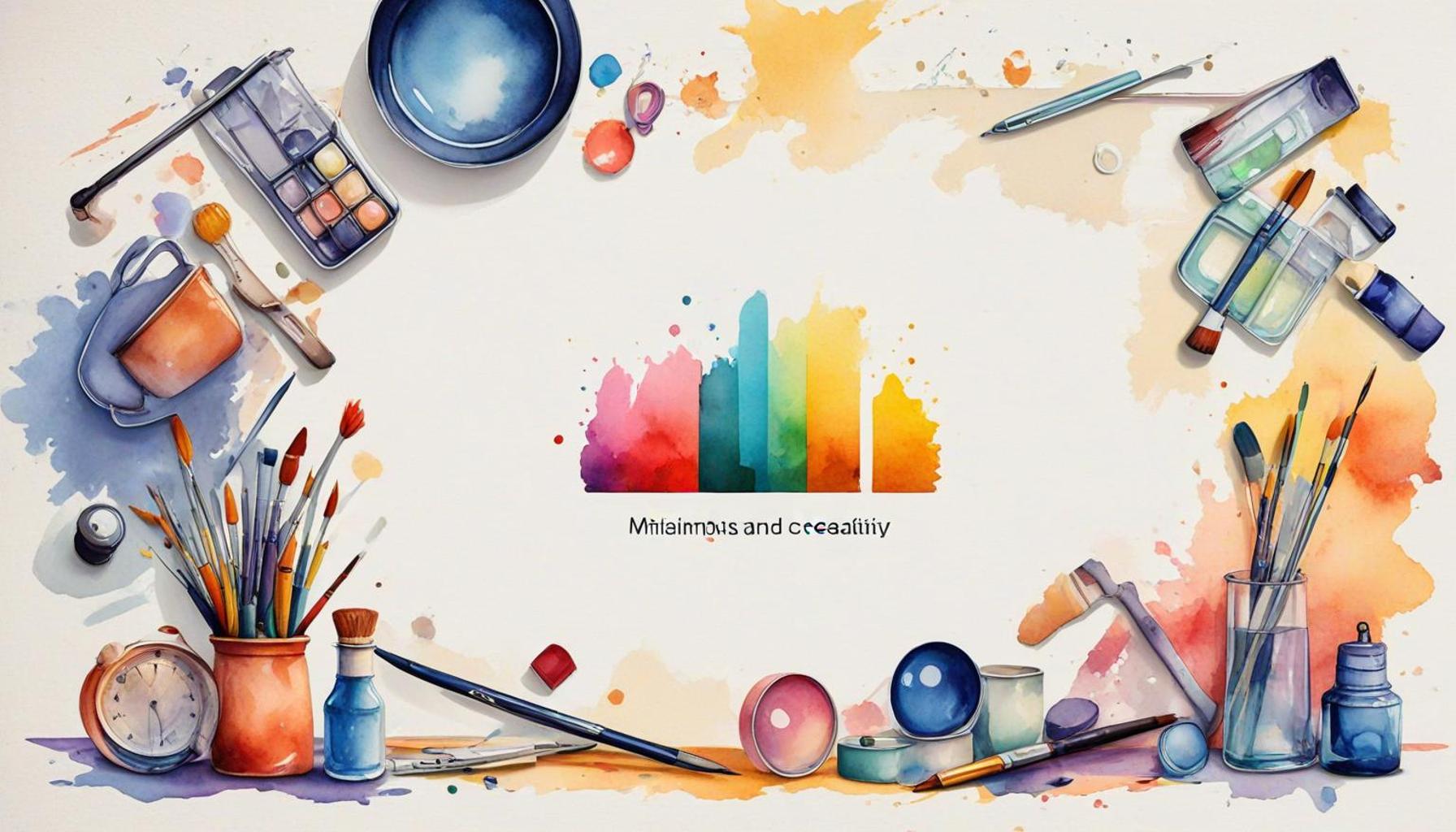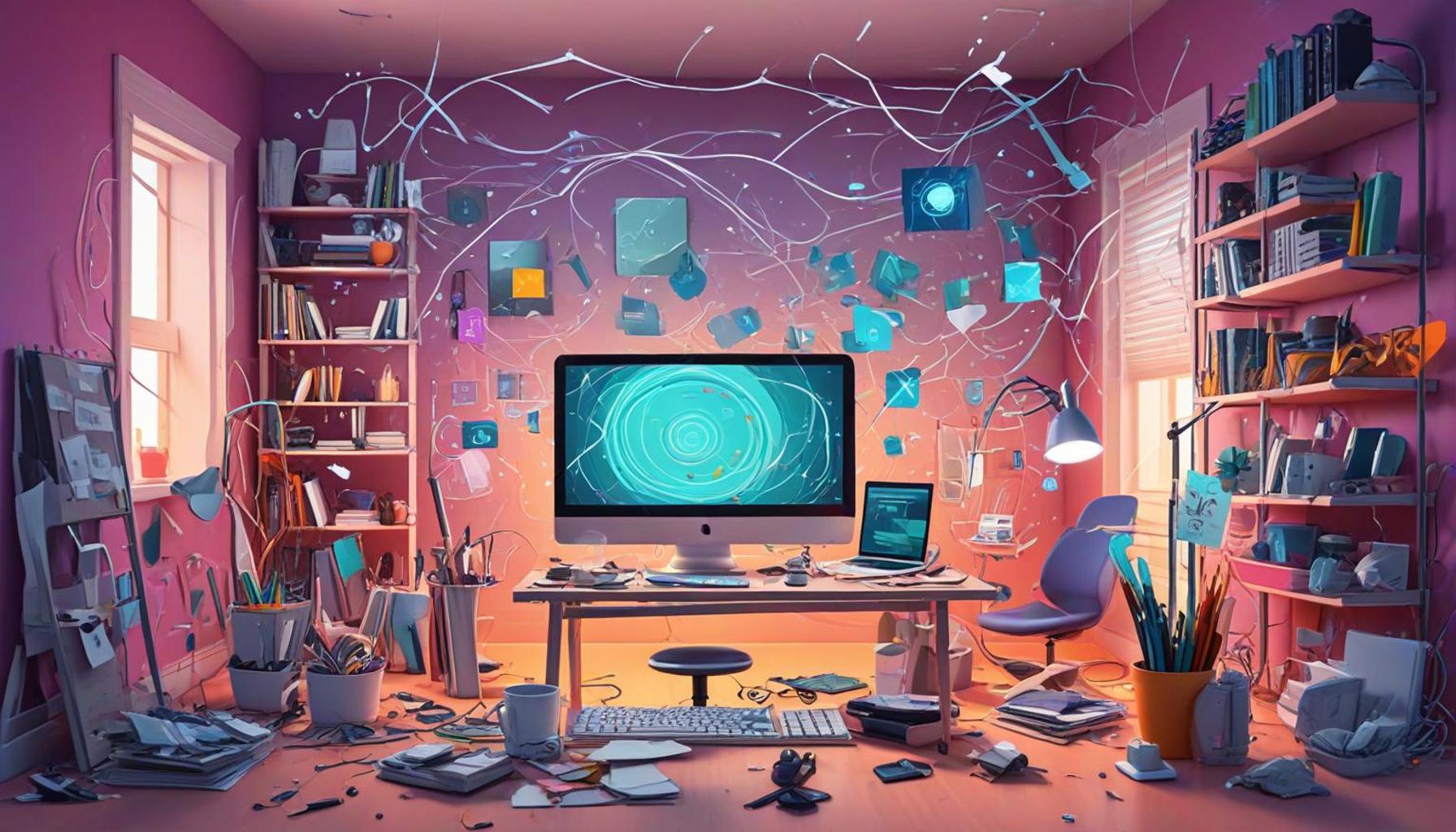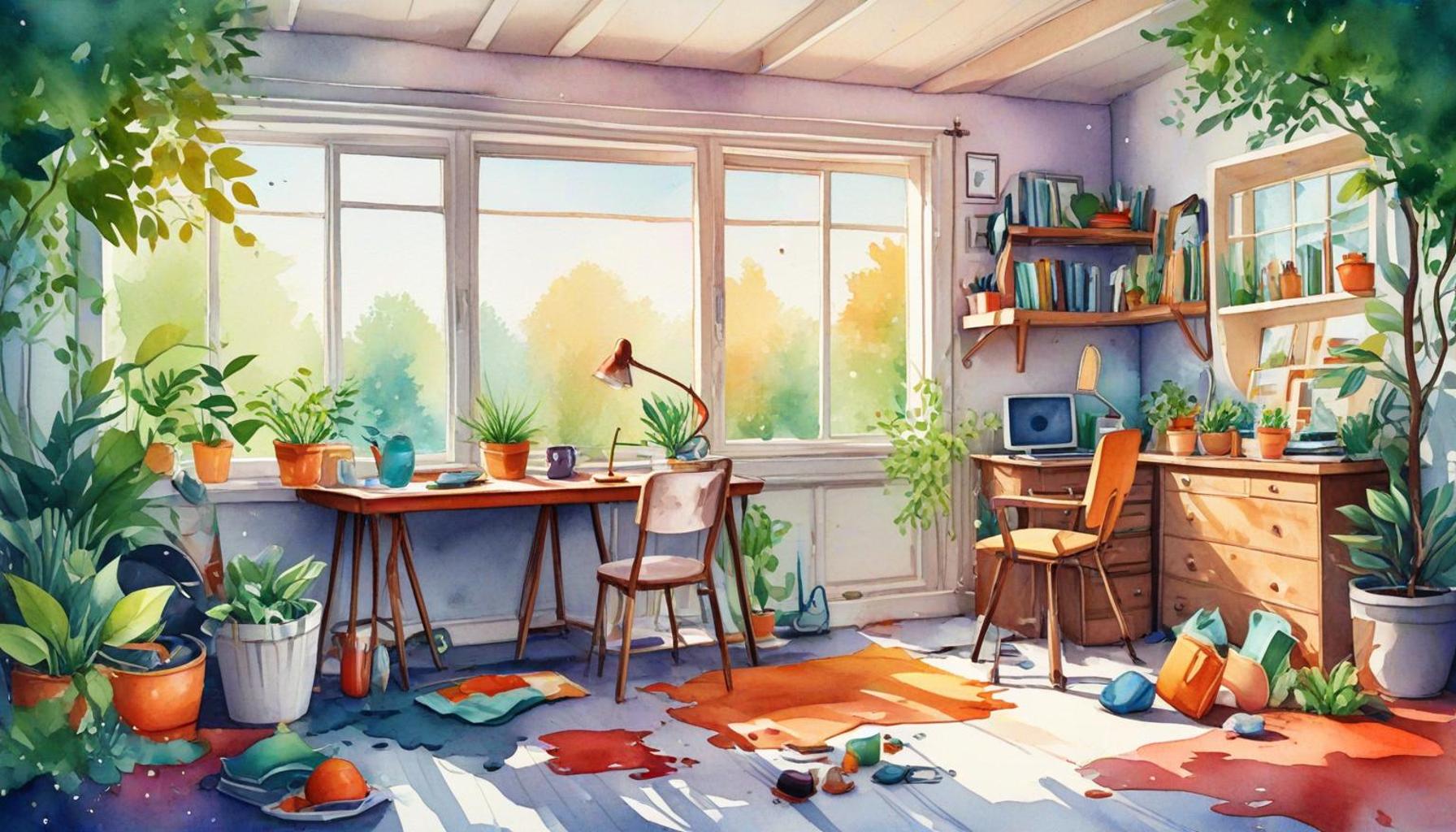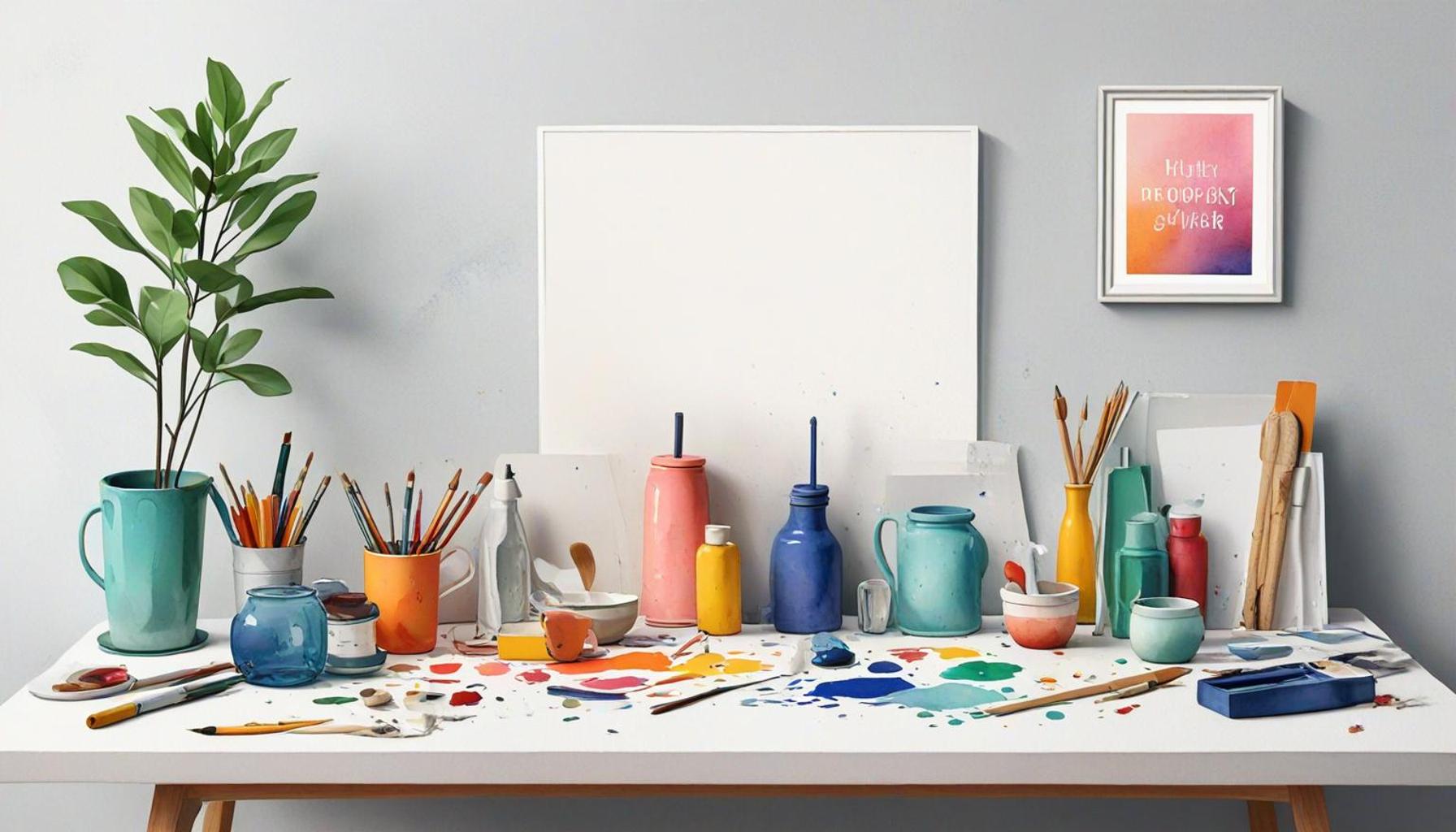Minimalism and Creativity: How Reducing Clutter Stimulates Innovation and Inspiration

Understanding the Impact of Minimalism on Creative Thought
In a fast-paced world filled with distractions, the concept of minimalism has emerged as a powerful antidote. Reducing clutter not only simplifies our physical spaces, but it can also profoundly impact our mental landscapes. Embracing minimalism fosters an environment where creativity can thrive, allowing individuals to engage in deeper concentration and innovative thinking.
Consider the following key benefits of minimalism that stimulate innovation and inspiration:
- Enhanced Focus: Minimalist environments reduce visual distractions, allowing the mind to concentrate deeply. A study conducted by the University of Minnesota found that excessive visual stimuli can lead to increased cognitive load, which hampers problem-solving abilities. A simple desk free of clutter can markedly improve productivity and focus.
- Increased Clarity: A simplified space creates room for new ideas and facilitates clearer thinking. When surrounded by fewer physical objects, the brain can allocate resources to creative processes, making it easier to connect disparate ideas and develop innovative solutions.
- Stress Reduction: Less clutter often leads to reduced stress levels, freeing up mental energy for creative pursuits. Research by UCLA’s Center on Everyday Lives and Families indicates that an overwhelming amount of belongings can increase anxiety and diminish overall well-being. A decluttered space invites a sense of calm, promoting a fertile ground for creativity to bloom.
Notable figures in history have embraced this philosophy, showcasing how minimalism can drive forward-thinking creativity. For instance, renowned author and architect Frank Lloyd Wright lived by the principles of minimalism, designing his homes and buildings to encourage both functionality and beauty. His open spaces and organic architecture challenged conventional designs, allowing the interplay of light and environment to inspire innovation.
Similarly, tech mogul Steve Jobs often credited simplicity as a crucial aspect of creativity in product design. Jobs famously sought to strip his products down to their essential elements, believing that this approach opened the door for groundbreaking designs and technological innovations that changed the world.
As we delve deeper into how reducing clutter can trigger creativity, we will explore practical strategies and examples that inspire a minimalist approach to innovation. This journey of discovery will highlight simple actions such as organizing workspaces, focusing on essential tasks, and embracing the art of letting go of unnecessary items. By understanding how embracing less can truly lead to more, individuals can unlock their creative potential and enhance their problem-solving abilities. Join us as we reveal how a minimalist lifestyle can spark creativity in your life and work.

DISCOVER MORE: Click here to learn about minimalist living
The Connection Between Minimalism and Enhanced Creativity
The allure of minimalism extends beyond just aesthetics; it delves into the heart of how we think and create. As individuals seek to cultivate a more creative mindset, the principles of minimalism provide invaluable insights. By stripping away the non-essential, we can open pathways to fresh ideas and innovative approaches.
One of the most compelling aspects of minimalism is its ability to foster a sense of mental clarity. When our surroundings are orderly and free from distractions, we engage in a more focused way of thinking. This is particularly crucial in creative fields, where the ability to streamline thoughts often translates to unique and impactful work. A study published in the journal “Cognitive Science” illustrates how simplified environments can enhance cognitive performance, suggesting that minimalism is not just a lifestyle choice but a strategic approach to productivity.
Moreover, embracing minimalism encourages individuals to concentrate on their core ideas, rather than getting lost in a sea of options. This principle can be applied across various creative disciplines, from writing to design. For instance, when a writer focuses on a singular narrative thread without the clutter of extraneous details, they can craft more compelling stories. Similarly, designers who limit their palette can create striking visual identities that resonate with audiences. The power of simplicity opens doors to innovation by allowing creators to explore depth rather than breadth.
Practical Benefits of a Minimalist Approach
Incorporating minimalism into daily life yields numerous benefits that directly impact creativity. Here are some practical advantages that contribute to a more imaginative mindset:
- Streamlined Decision-Making: Fewer choices lead to quicker and more confident decisions—a crucial advantage in any creative process. By minimizing options, individuals can spend less time deliberating over the insignificant and more on what truly matters.
- Improved Emotional Wellbeing: A decluttered space promotes emotional peace. Research shows that a serene environment reduces feelings of overwhelm, which is essential for nurturing creativity. Calmer minds are more inclined to explore innovative thoughts and solutions.
- Enhanced Collaboration: In team settings, a minimalist approach can facilitate smoother communication and synergy. When everyone is on the same page—both literally and figuratively—creative collaborations thrive, leading to remarkable outcomes.
Historical figures provide vivid examples of how a minimalist lifestyle can lead to groundbreaking creativity. For instance, artist Pablo Picasso transformed the world of art by continuously evolving his style while distilling his subjects to their core essence. His ability to reduce form to its fundamental components not only reshaped artistic conventions but also continues to influence modern creators.
As we navigate the journey of minimalism and creativity, understanding how to implement these principles can unlock untapped potential within ourselves. The exploration of practical strategies—ranging from creating a serene workspace to prioritizing meaningful pursuits—will reveal how embracing less can significantly elevate our creative processes. Thus, minimalism stands not just as a lifestyle but as a catalyst for inspiration and innovation.
| Advantages of Minimalism | Impact on Creativity |
|---|---|
| Enhanced Focus | By reducing distractions, individuals can concentrate on important tasks, leading to better problem-solving skills and creative solutions. |
| Increased Clarity | A minimalist environment fosters mental clarity, allowing for inspired thoughts and innovative ideas to flourish naturally. |
| Freedom to Explore | With fewer possessions weighing them down, individuals feel liberated to explore new creative avenues and hobbies. |
| Quality over Quantity | Focusing on fewer projects often results in higher quality work, as it allows for more intention and passion in each endeavor. |
By embracing minimalism, individuals set the stage for enhanced creativity and innovation. This concept, explored in depth, shows that a clutter-free environment not only fosters a greater sense of peace but also stimulates new and exciting ideas. As you delve deeper into the relationship between minimalism and creativity, consider how even small changes can lead to profound transformations in your work and artistic expression. Understanding the dynamics of minimalism can guide anyone towards a more innovative path.
DISCOVER MORE: Click here to learn how mindful consumption can elevate your organization
Unlocking Creative Potential Through Minimalism
As we explore the symbiotic relationship between minimalism and creativity, it becomes clear that adopting a minimalist lifestyle is more than just an aesthetic choice; it’s a profound strategy for unlocking creative potential. The principles of minimalism extend to various aspects of life, including our workspace, mindset, and even our digital environments.
One critical area where minimalism has shown to significantly enhance creativity is in the workspace design. A cluttered desk packed with unnecessary items can lead to a chaotic mind, hindering one’s ability to concentrate. Conversely, a clean and organized space empowers individuals by reducing visual noise. A study by the Princeton University Neuroscience Institute concludes that environments with less clutter help individuals maintain focus and productivity. When the workspace is curated intentionally, it allows for a more effortless flow of thoughts, enabling creative ideas to flourish.
The Role of Digital Minimalism
In today’s hyper-connected world, digital minimalism is another critical consideration. The endless notifications, emails, and digital distractions can overwhelm even the most inspired minds. Research from the University of California suggests that multitasking reduces productivity by a staggering 40%, which deters creative exploration. Adopting a minimalist approach to digital consumption—such as limiting social media, unsubscribing from unnecessary emails, and organizing digital files—can lead to increased mental bandwidth, opening avenues for inspiration and innovation.
Furthermore, the minimalist framework encourages intentionality in creative pursuits. By focusing efforts on a select few projects or ideas, creators can invest the time and energy needed to refine and deepen their work. A powerful example is seen in the tech industry: companies like Apple have thrived by emphasizing simplicity and focus in their product design. The streamlined approach pioneered by Steve Jobs emphasizes how minimalism not only enhances user experience but also inspires innovation within the company.
Emotional Benefits Leading to Innovation
The emotional benefits of minimalism also play a crucial role in stimulating creativity. A simplified lifestyle can drastically reduce stress levels, which is essential for nurturing a vibrant creative spirit. Research published in the journal “Environment and Behavior” reveals that individuals in minimalist environments report higher levels of satisfaction and lower levels of anxiety. This newfound emotional equilibrium helps foster a safe space for experimentation, where risk-taking and playfulness are welcomed—key ingredients for innovation.
Moreover, famous creatives have long illustrated the connection between minimalism and profound creativity. Notably, writers like Ernest Hemingway mastered the art of concise expression, employing simple yet powerful language that resonates profoundly with readers. His “iceberg theory” of writing emphasizes the importance of minimalism, where only a fraction of meaning is overtly expressed, allowing the depth to emerge beneath the surface. This approach serves as a reminder that true innovation often arises from simplicity rather than complexity.
Ultimately, as individuals and teams navigate their creative journeys, incorporating minimalist practices can redefine their approaches. By limiting distractions, embracing intentionality, and fostering emotional well-being, the canvas for innovation becomes clearer. Through minimalism, creativity can thrive in a space where the possibilities for inspiration are abundant, laying the groundwork for transformative ideas that resonate across various domains.
DISCOVER MORE: Click here to dive deeper
Embracing Minimalism as a Catalyst for Creative Expression
In conclusion, the intersection of minimalism and creativity presents a compelling narrative that invites individuals to reconsider their environments and mindsets. By embracing minimalistic principles, such as decluttering both physical and digital spaces, we enable a clearer pathway for innovation and inspiration. The reduction of distractions—whether through a refined workspace or curbed digital habits—can significantly enhance focus and productivity, allowing for deeper engagement with creative pursuits.
Moreover, the emotional benefits that accompany a minimalist lifestyle—such as reduced stress and heightened satisfaction—are vital for fostering a healthy creative spirit. With enhanced emotional well-being, individuals can experiment and take risks, crucial elements that often lead to groundbreaking ideas. Historical figures like Ernest Hemingway demonstrate how simplicity in expression can resonate powerfully, reiterating that profound creativity often flourishes within minimalist frameworks.
As we navigate an increasingly complex world, the call to embrace minimalism becomes ever more pertinent. By prioritizing intentionality in our creative endeavors, we not only enhance our productivity but also redefine the very essence of our creations. As individuals and organizations alike adopt minimalist philosophies, we can expect a landscape rich with transformative ideas, where the essence of creativity and innovation thrives amidst simplicity.
Ultimately, the journey toward a minimalist mindset is not an end but an ongoing process that cultivates creativity and opens doors to new possibilities. The challenge lies not only in decluttering our external worlds but also in fostering a minimalist approach within ourselves, making room for creativity to take flight in its purest form.


